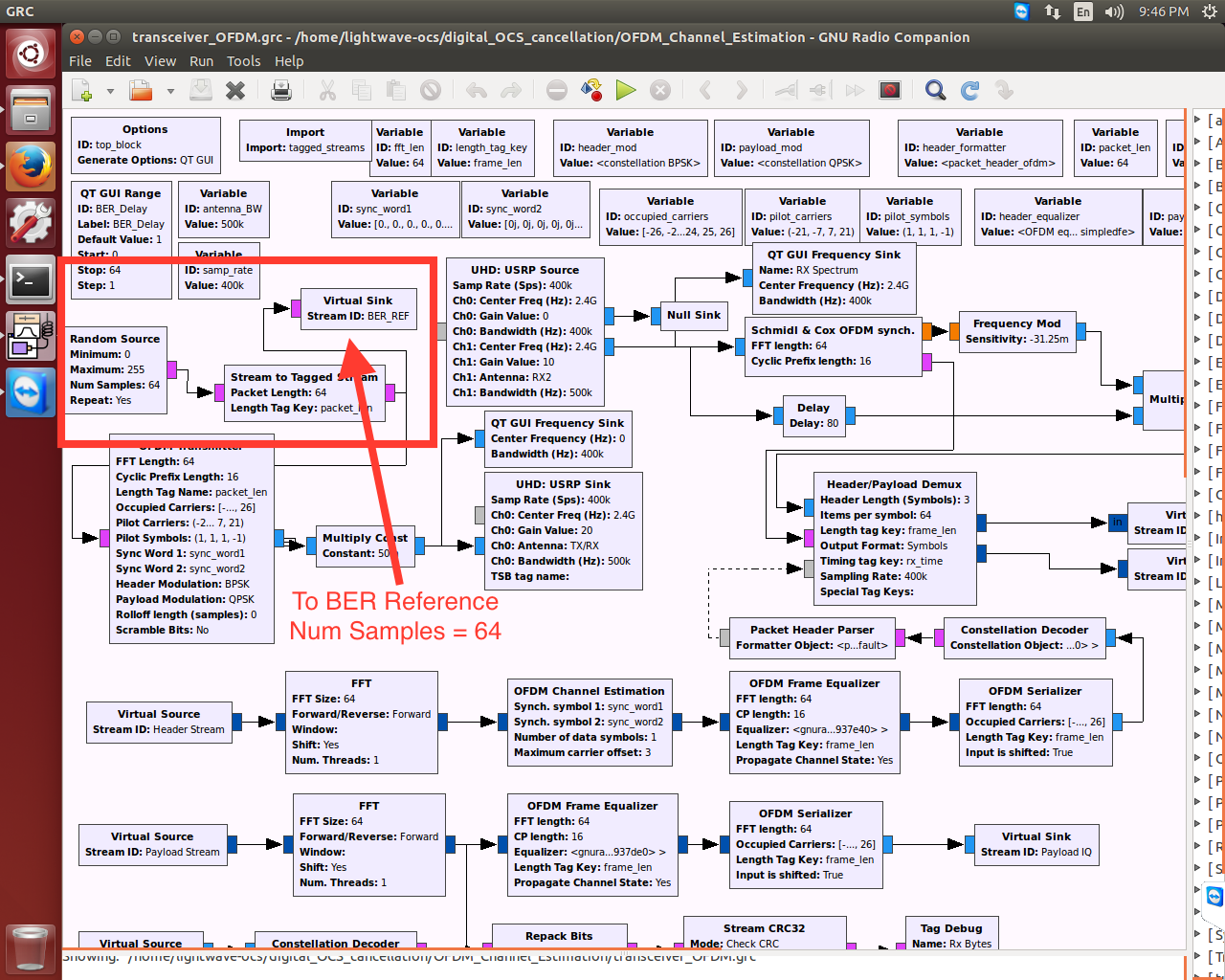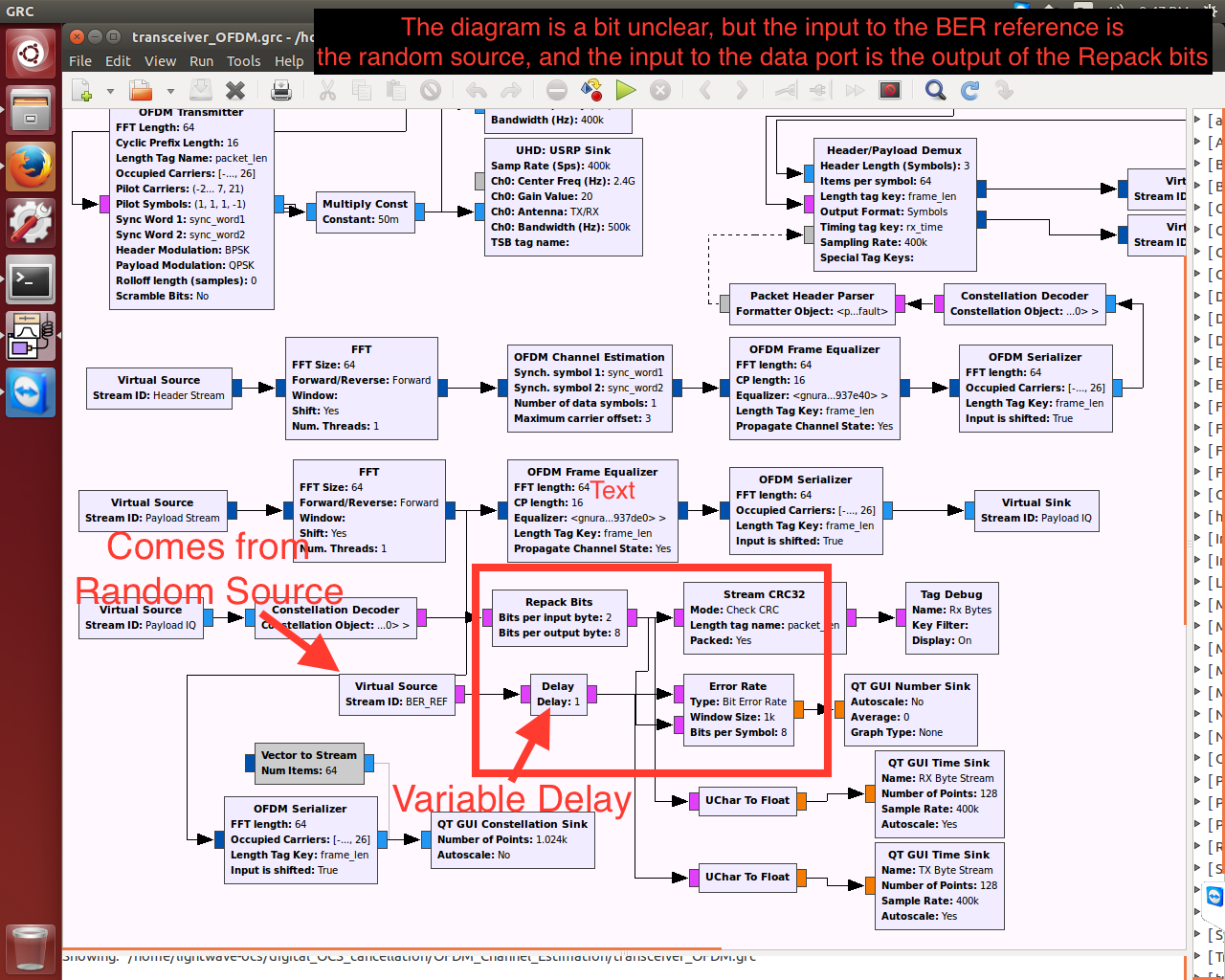Hi Martin (and everyone else),
Thanks for your help! We’ve been able to make some progress on our questions:
Constellation Diagram:
As you mentioned, Martin, it was the hard decision that was forcing the output to just four dots. We wired the constellation diagram up to the output of the OFDM receiver FFT, but before the equalizer, and the constellation diagram became a fairly neat circle. I suspect that the diagram is a circle because the frequency/time synchronization, which is usually performed in the OFDM equalizer, is now missing. We will work on implementing an equalizer without the hard decision, and will ask if we have any questions.
Bit Error Rate:
We found a helpful post online that indicated that perhaps the BER only works if the number of samples = the payload length of the OFDM process, which I believe is 64. After setting the random source number of samples to 64 (repeat = yes), we also added a variable 1-64 sample delay before the BER block’s reference input. We then ran the program, and varied the delay between 1-64 to see if the BER would drop. Unfortunately, we had no luck.
To debug, we sent the two signals going into the BER block into two QT time sinks to do a visual comparison. What we found was that the signals were clearly identical. However, the signal going into the BER reference input (which came from the random source) was static, while the signal going into the BER data input was streaming. We were wondering if this had any affect on the measurement? I’ve linked to a video showing what I mean in the following dropbox link:
In addition, I’ve attached two screenshots showing our flow diagram, with the relevant parts related to the BER highlighted. The two screenshots come from the same flow diagram, it’s just too large to fit on one screen.
Thanks again for all your help! Let us know if you have any ideas and we’ll give it go in the lab.
Best,
Jenny & Team

